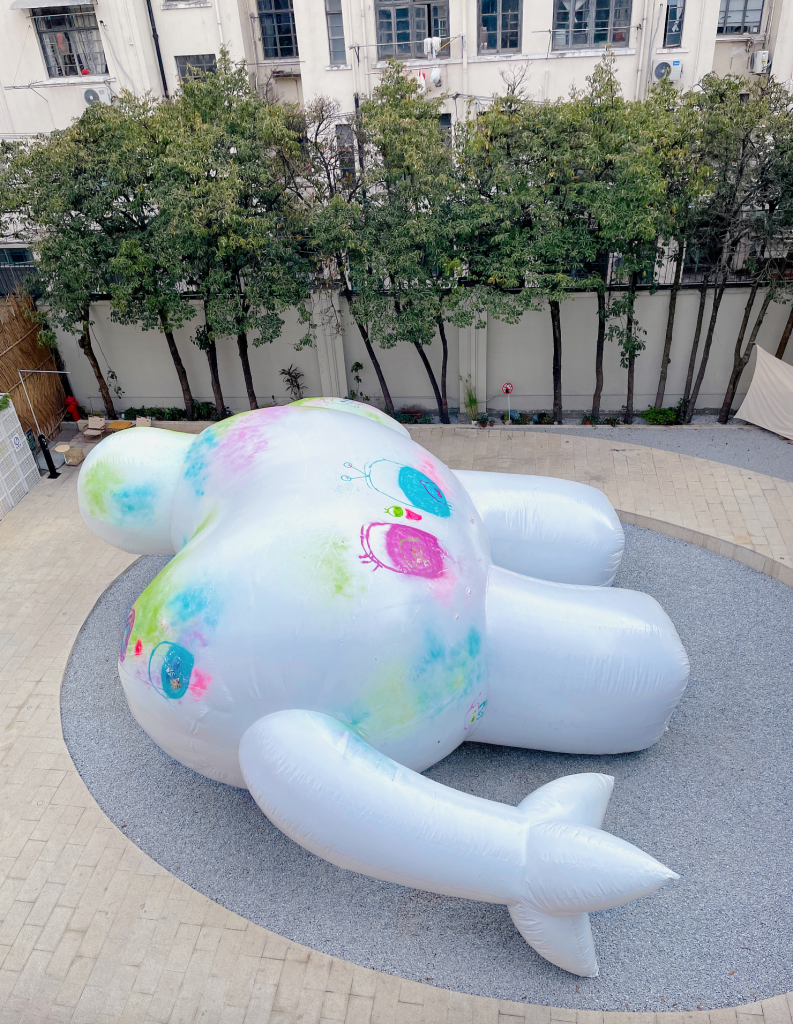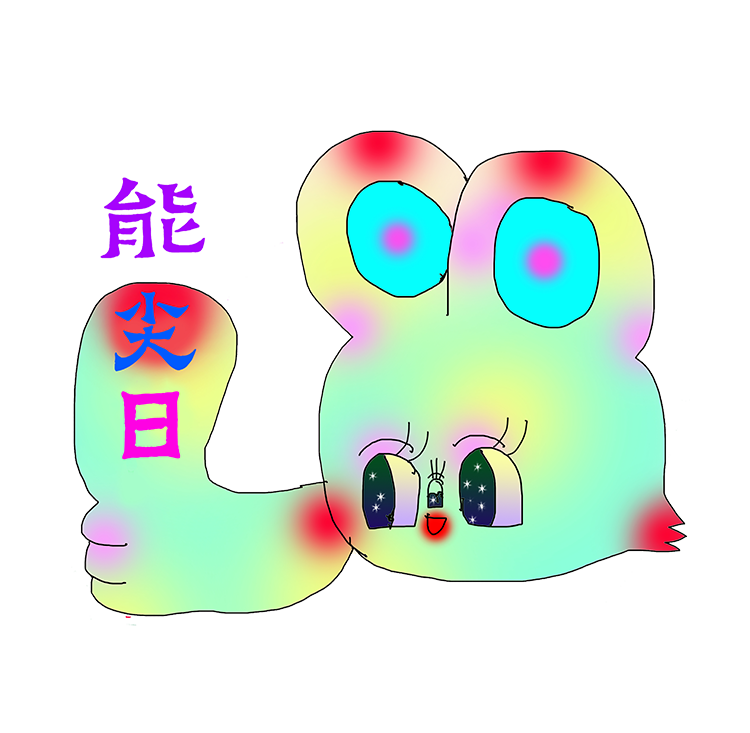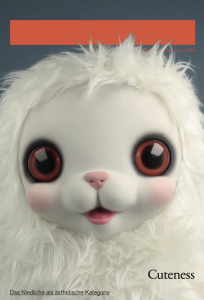
Niedliche Kunst?
⍢⃝ ⍤⃝ ⍨⃝∵⃝♡⍢⃝ ⍤⃝ ⍨⃝∵⃝♡⍢⃝♡ ⍤⃝⍨⃝♡
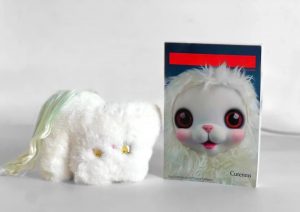
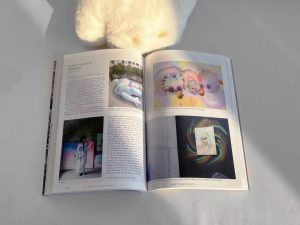
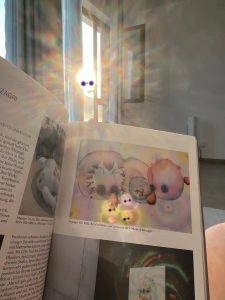
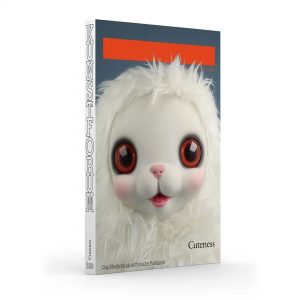

Niedliche Kunst? Das klingt wie ein Widerspruch. Kunst kann vieles sein – aber gewiss nicht süß. Daher ist „Cuteness“ eines der letzten Tabus in der Bildenden Kunst. Durch Globalisierung und Soziale Medien werden etablierte Kunstvorstellungen und Werkformen jedoch immer wieder herausgefordert – so auch, indem das Niedliche in den Bereich der Bildenden Kunst vordringt. Doch warum beschäftigen sich Künstler*innen mit dem Niedlichen und nutzen diese Ästhetik?
Der aktuelle Themenband befasst sich ganz ungeniert mit niedlicher Kunst. In Essays der GastherausgeberinAnnekathrin Kohout sowie ihrer Co-Autor*innen wird die Geschichte des „Cuten“ vom japanischen Kawaii über Catcontent bis in die Gegenwartskunst von Künstler*innen wie Cosima von Bonin, Avery Gia Sophie Schramm oder Marc Ryden aufgezeigt. Dabei stellen sich mitunter auch ernste Fragen, wie etwa: Welche kulturellen, gesellschaftlichen und politischen Entwicklungen machen eine Bildwelt der „Cuteness“ überhaupt erforderlich?
⍢⃝ ⍤⃝ ⍨⃝∵⃝♡⍢⃝ ⍤⃝ ⍨⃝∵⃝♡⍢⃝♡ ⍤⃝⍨⃝♡
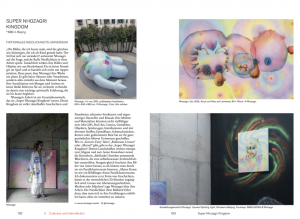
KINGDOM
*1989 in Beijing
FIKTIONALES NIEDLICHKEITS-UNIVERSUM
Die Bilder, die ich heute male, sind die gleichen wie diejenigen, die ich als Kind gemalt habe. Der Stil hat sich nie verandert”, antwortet Nhozagri auf die Frage, welche Rolle Niedlichkeit in ihrer Arbeit spiele. Tatsachlich wirken ihre Bilder und Objekte wie aus Kinderhand: Da ist keine Nostal- gie im Spiel und es handelt sich nicht um Appro- priation. Dazu passt, dass Nhozagri ihre Werke nie plant. Es gibt keine Skizzen oder Vorarbeiten, sondern alles entsteht aus dem Moment heraus. Ihre Sozialisation mit Mangas und Animes ist keine bloBe Referenz fur sie, vielmehr verbindet sie damit eine wichtige spirituelle Erfahrung, die sie bis heute begleitet.
Nhozagris Arbeit ist ein Gesamtkunstwerk, das sie ,Super Nhozagri Kingdom” nennt. Dieses Kingdom ist voller ratselhafter Geschichten und Paradoxien, seltsamer Strukturen und eigen- sinniger Darsteller und Rituale. Ihre Medien und Materialien konnten nicht vielfaltiger sein: Mit GIFs, Nail Art, Comics, Gemalden, Objekten, Spielzeugen, Installationen und mit diversen Stoffen, Epoxidharz, Schmuckstucken, Kerzen oder gedunstetem Brot hat sie ihr ganz personliches fiktives Universum geschaffen. Wie es , Green’s Fairy Tales”, ,Robinson Crusoe” oder , Marvel” gibt, gibt es das ,Super Nhozagri Kingdom” Dessen Landschaften wirken transpa- rent, filigran und zart. Seine Einwohner nennt die Kunstlerin , Molluske”, formbar anmutende Weichtiere, die eine selbstbewusste Zerbrechlich- keit ausstrahlen. Stargate-gleich leuchten ihre Bil- der von innen heraus, so als konnte man durch sie ein Paralleluniversum betreten. Meine Kunst ist wie ein Bildfanger dieses Paralleluniversums. Ich dokumentiere es in Form von Geschichten, damit es der menschlichen Zivilisation zugang- lich wird. Genau wie Abenteuergeschichten, Mythen oder Marchen”, sagt Nhozagri uber ihre Arbeit. Die Niedlichkeit ihrer Bildwelt fuhrt dazu, dass man sich in ihre Erzahlungen einfuh- len kann, ohne sie verstehen zu mussen.
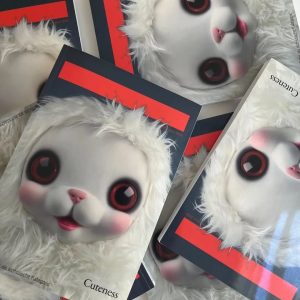
官网
https://www.kunstforum.de/
购入链接
https://www.kunstforum.de/abo/probelesen/?bandnummer=289
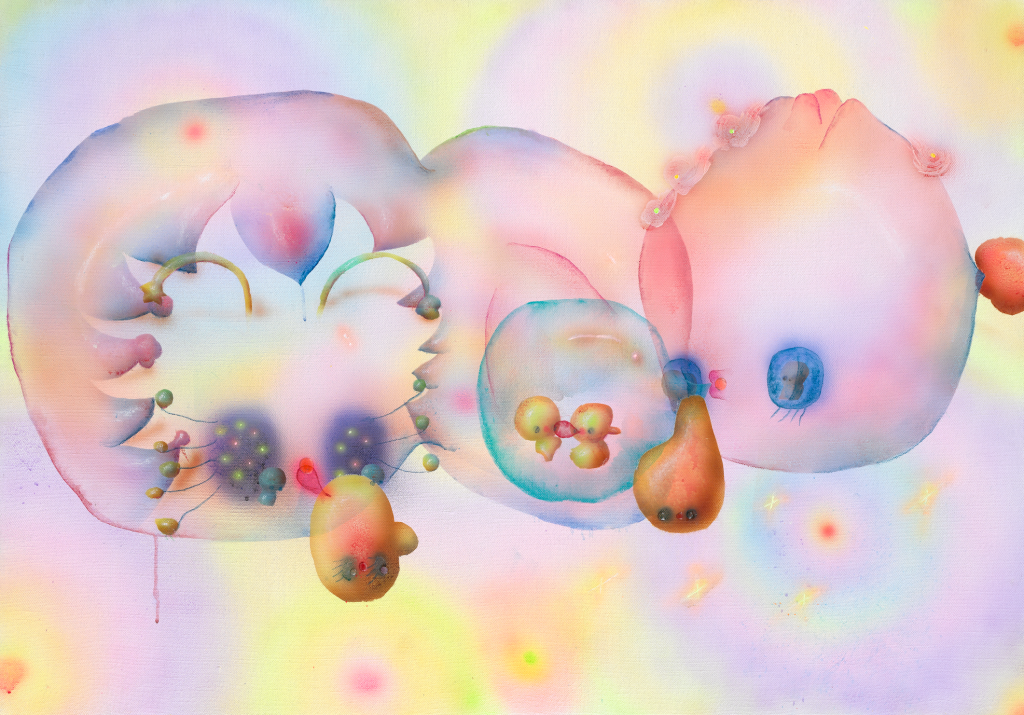
Algorithms can be great! Sometimes. I still remember the first time a picture of Nhozagri floated into my Instagram feed. I hadn’t seen anything like it before. It was a pastel watercolor, perhaps behind epoxy – glittery epoxy! – and framed by a furry fabric flower. The flower embeds the painting gently, allowing the viewer to only catch a glimpse of the art. A small chain that looks like an earring is hanging around the flower. At the chains end, a tiny red-eyed fly buzzes around. „This flower is sweet!“ the caption said. I mean: How sweet is this comment? I immediately went to her profile and entered it – the Super Nhozagri Kingdom.
That was a few years ago. Since then, I’ve been trying to figure out what makes Nhozagri’s work so stunning. Is it her approach to materials? The way how she combines hard with cuddly soft, transparent with opaque? Is it the self-confident fragility and vulnerability that her figures radiate? Is it the incomparable aesthetic of cuteness, in which the lightheartedness of a child’s approach to the world asserts itself? For an upcoming issue of KUNSTFORUM International I am writing a text about Nhozagri’s work. For this occasion we did a little interview.
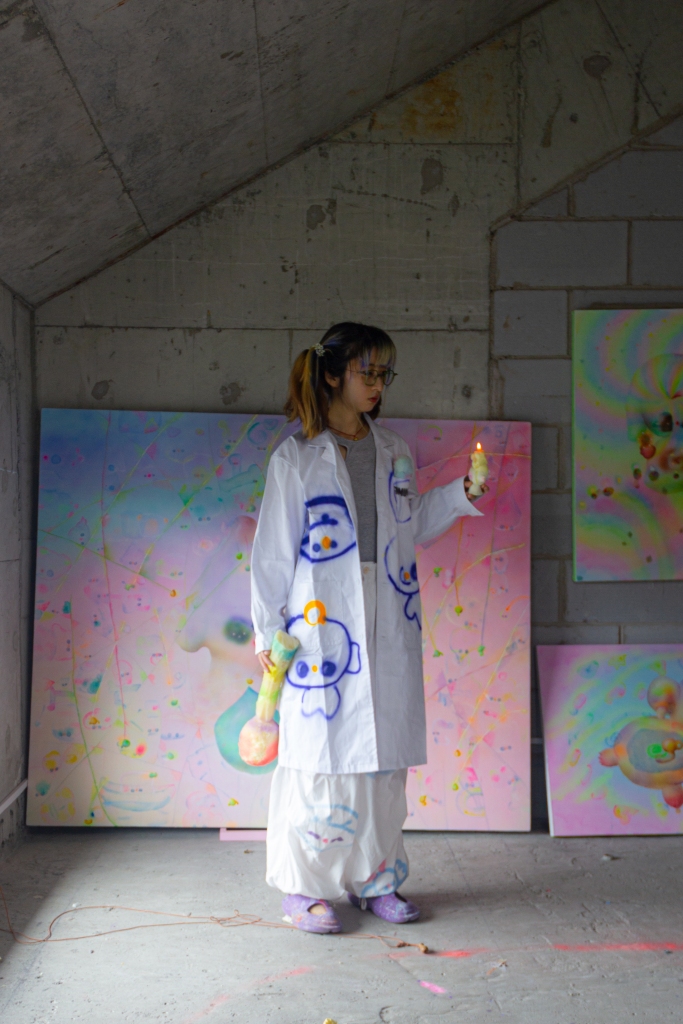
Hi Nhozagri! You call yourself „Super Nhozagri Kingdom.“ Where does this name come from and what does it mean to you?
„Super Nhozagri Kingdom“ is a general name for a narrative that I create with my work. I like unconventional narratives! Strange stories, paradoxes, odd structures and storytelling, and wayward performers – all of these could be described as elements of a parallel universe, a dimension that can be felt but not seen. My art is like a recording device or an image catcher of this parallel universe. I imagine it like this: I record the parallel world in the form of stories so that they become accessible to human civilization. Just like adventure stories, myths or fairy tales. In this respect, my complete work so far is the sum of these stories. Its name is „Super Nhozagri Kingdom“, just like there are „Green’s Fairy Tales“ and „Robinson Crusoe“. But I am not the king 🙂
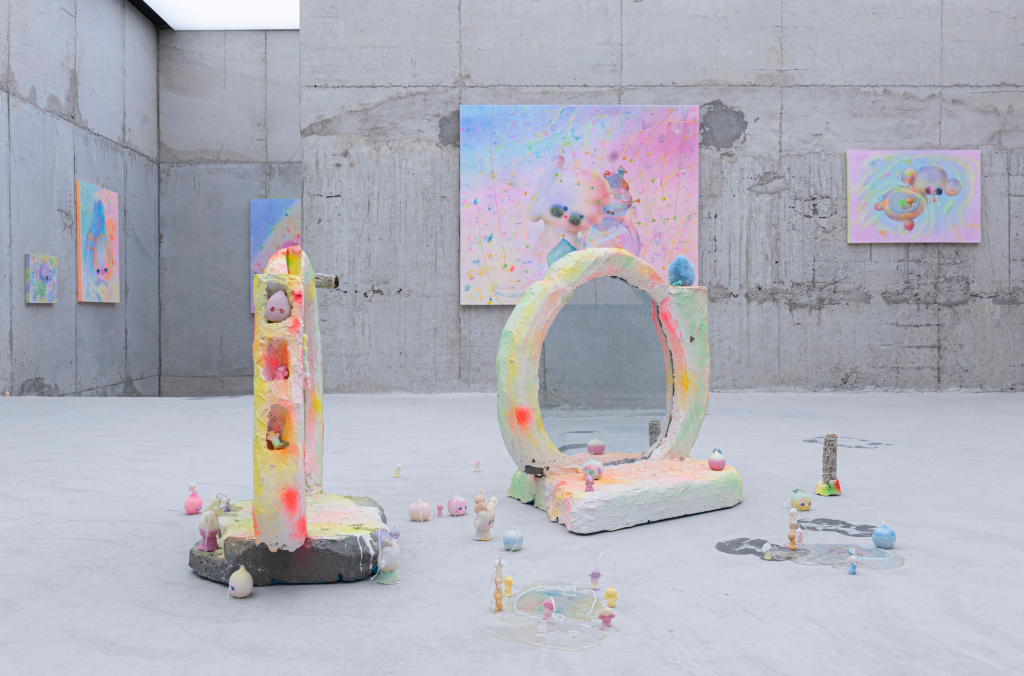
How would you characterize the Kingdom? What does it look like, how is it living there?
Well, it’s a parallel world… and the characters can be described as aliens. There are no conflicts yet, I think. The advantage is that as soon as the viewers scan the works with their eyes, their consciousness reaches the parallel world.
Your visual world is so unique and distinctive – where do you get your inspiration?
From „sailing downstream with the current,“ which is a state of mind from Taoism where everything is ‚one‘. When I am in this state, everything is inspiration – even powerlessness and laziness. Just everything has a form.
Are there any artists who have had a particular influence on you?
I love a group of artists called Paper Rad. I was strongly drawn to their ‚Gesamtkunstwerk‘ early on. Once it meets the magical world of Paper Rad, every shape becomes part of that Gesamtkunstwerk. In her active years in the early 2000s, her works looked marginalized and underground. I like ‚marginalized‘ so much. What is marginalized is not in the center, but on the edge. But the edge acts like a magnet. It exerts a special attraction on everything that is connected to it. At the same time, the edge is a dynamic area. And no matter how the center expands and migrates, the edge will always exist.
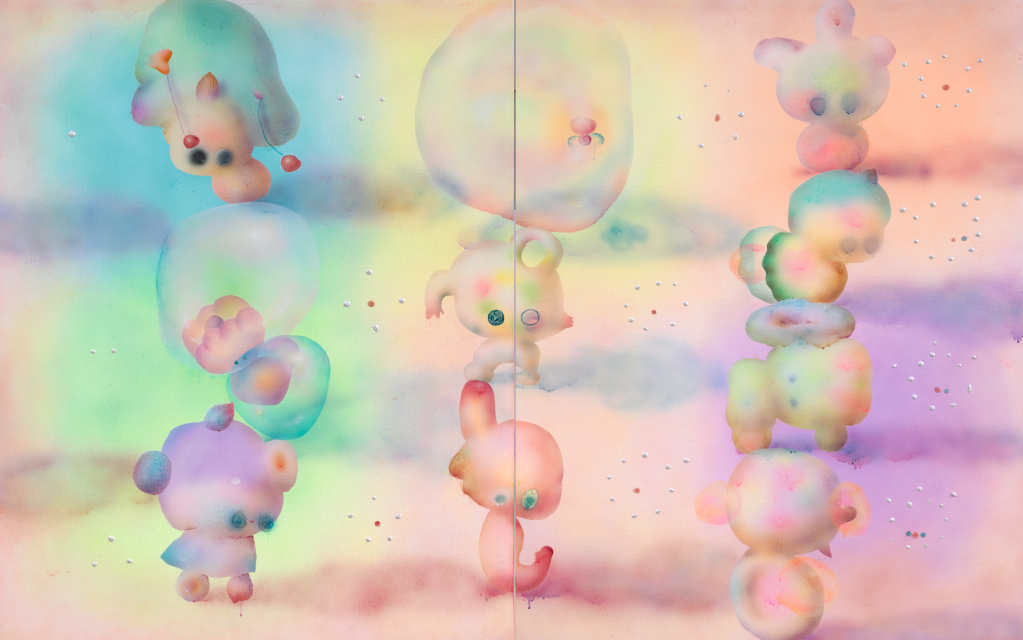
Is „cuteness“ an aesthetic that you chose consciously?
Cuteness is a kind of aesthetic gene, I didn’t research it specifically and then use it. In fact, the pictures I paint today are the same as the ones I painted as a child. The style has never changed. Although I received a traditional art education in college, my work aims to reject the logic of creations that aim to be methodically correct and successful.
On the other hand, cuteness is also a generational aesthetic. Manga and cartoons were a very important spiritual experience when we were kids. Actually, Super Nhozagri Kingdom is something like a cartoon in our memory. I want to emphasize „in our memory“ because all memories are just fragments, and some of the memories are not facts. It’s more about how my Kingdom feels to others. I am very interested in mysticism. I was once told that one of my „past lives“ existed in 2D cartoons. 2D, 3D, 4D, all these different dimensions have been around since the Big Bang. And human consciousness is connected to each dimension. It’s also connected to a rock, to a drop of water, also to a cartoon, and of course to cuteness. I know that sounds strange. But I think it’s a way to look at cuteness. We use our consciousness to create what we think of as reality. And then we use consciousness to experience that reality and develop theories in the process….
Is it allowed to play with your art? You make cuddly toys from time to time!
Thank you for noticing the toys. The toys must be happy! I am always ready to play. Because playing is a closer and more intimate way to experience art. From the perspective of my parallel world concept, it’s also a dimension-crossing experience!
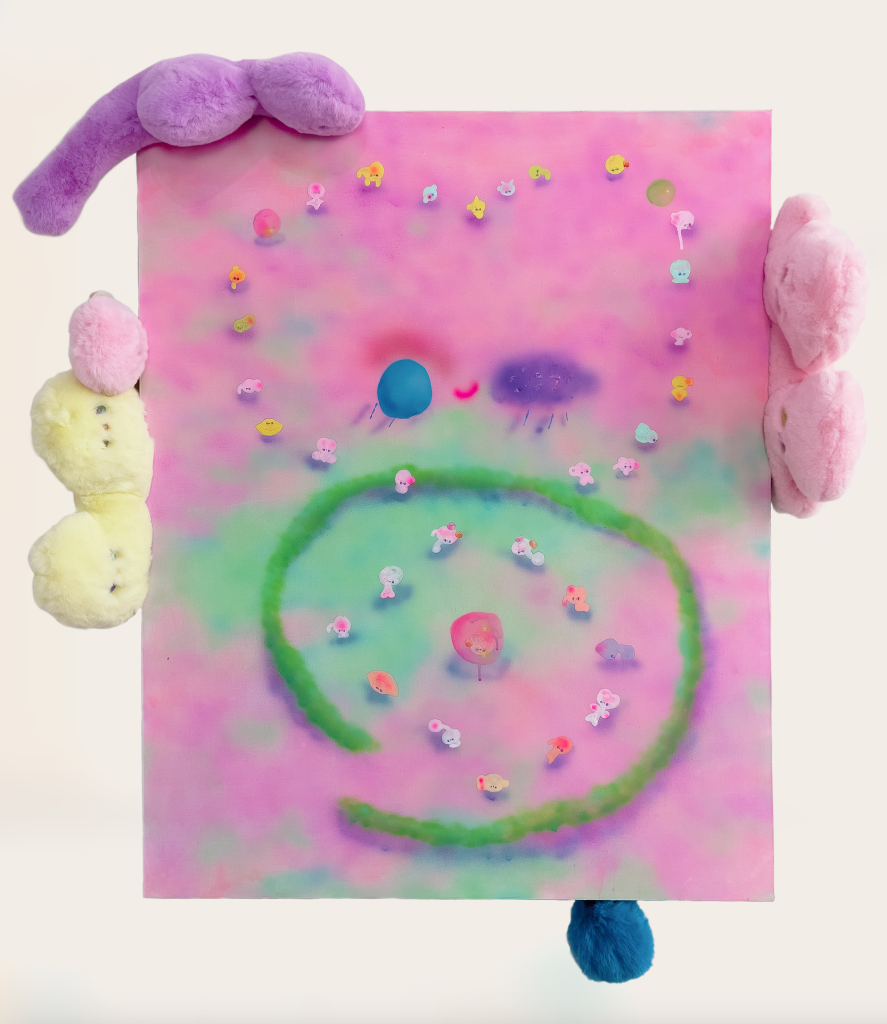
Does humor play a role in your work?
Humor and happiness are cause and effect. Many works convey the energy of happiness, so humor plays a role in the works.
You often use color schemes/techniques that make your images glow as if from within. Is this an effect that is important to you, and if so: why?
I’m glad you noticed the glow. For me light is like a channel that connects the three-dimensional world to the Kingdom. Light is a bridge, everything is born in light. In classical European painting, light is a very important medium. Artists used light to create. So yes, I very much hope that the light in my works shines from within.
Can you say something about how you use materials? I find it so interesting how soft, cuddly and hard, unyielding materials come together in your work.
My studio is full of junk o(*≧▽≦)ツ
I have a habit of collecting materials that interest me. There is never a sketch for a work, I just can’t work according to a plan. I usually stay in the studio for a certain amount of time and go by my feelings when making artwork and choosing materials.
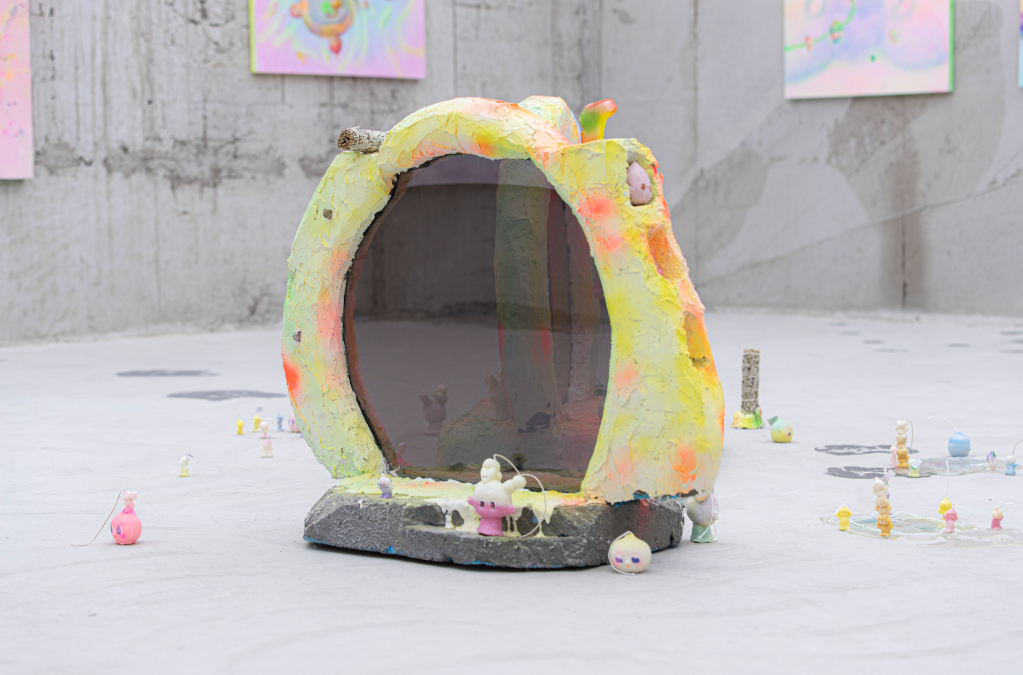
You also make figures out of candles, steamed bread or snow – is transience a theme in your work?
Thank you very much for this hint! Yes, I like the theme of time. The physical time of a work itself is also a form of expression, like colors. I hope to bring the element of time into the experience of an artwork, because I feel that experiencing time stimulates people’s emotions. So I really like to think about time, but at the same time, time is too abstract to turn into a physical artwork. It’s easy to feel, but hard to show. I hope to create a body of work that is not about the physical material, but that people can empathize with. Like I’m building an energy field that you can enter through meditation! One will still be allowed to dream, haha.
Thank you!
